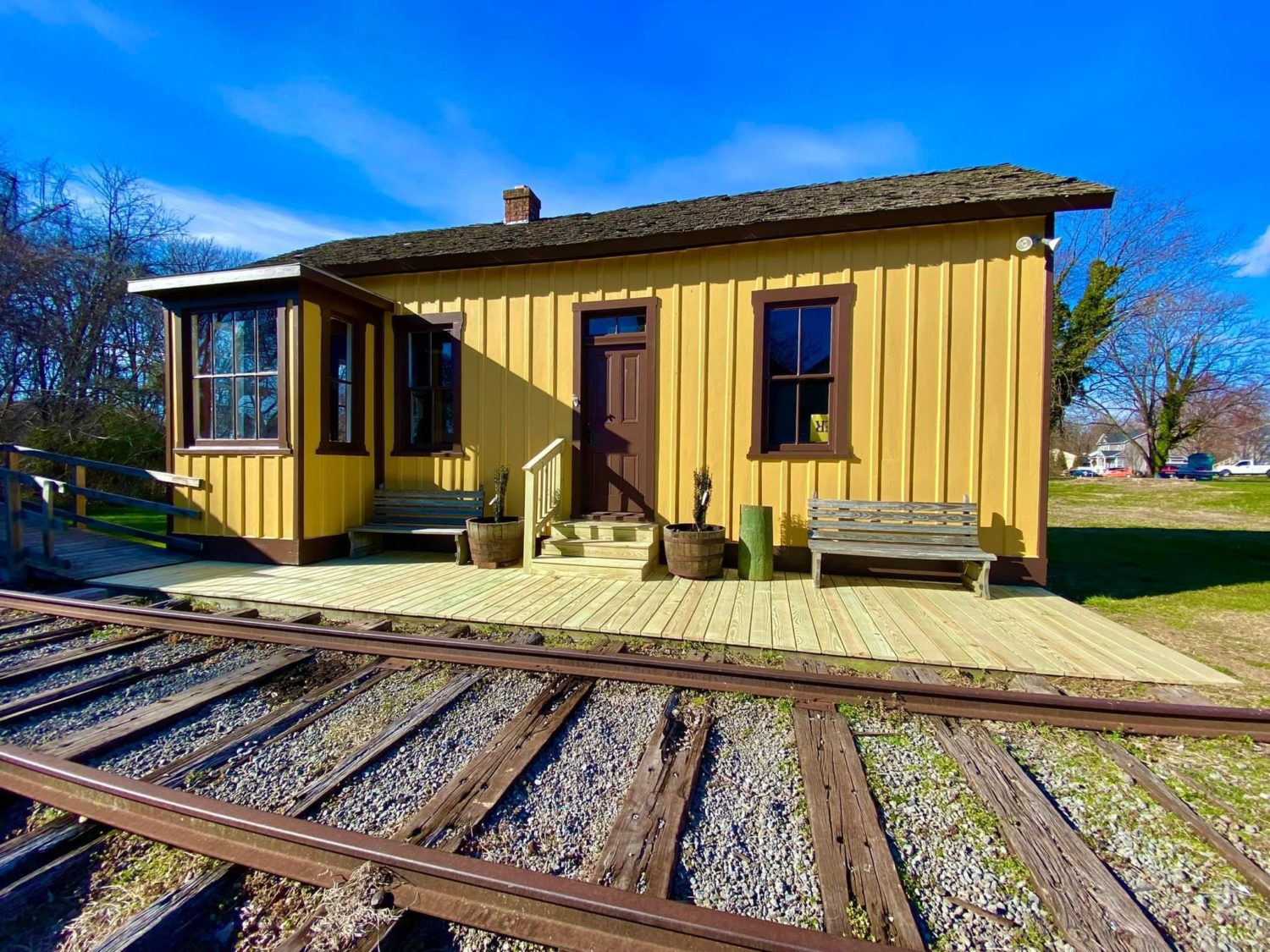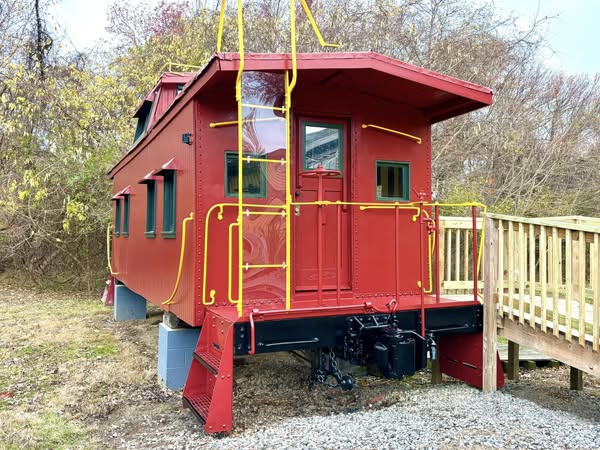Stevensville Train Station and Caboose
Train Station
The period following the Civil War a high priority in our country was the expansion of the railroads. The Delmarva Peninsula felt a strong need for a rail crossing the upper area which would include both Maryland and Delaware. In 1894 the Maryland Legislature approved a charter for the construction of a railroad. It was named the Queen Anne’s Railroad. The following year the State of Delaware granted similar charter and the project began. It was completed in 1897 and rail service from Queenstown on the west to Lewes, Delaware the eastern terminus was a vital addition to the transportation system for the entire area. From the major port Baltimore connection with Queenstown was made by steamboat. Likewise at Lewes steamboats would complete the journey across the Delaware Bay to take you to the Jersey Cape and Cape May, a flourishing ocean resort. It was a 5 hour adventure from Baltimore to Cape May.
completed in 1897 and rail service from Queenstown on the west to Lewes, Delaware the eastern terminus was a vital addition to the transportation system for the entire area. From the major port Baltimore connection with Queenstown was made by steamboat. Likewise at Lewes steamboats would complete the journey across the Delaware Bay to take you to the Jersey Cape and Cape May, a flourishing ocean resort. It was a 5 hour adventure from Baltimore to Cape May.
The Queen Anne’s Railroad opened new markets for the products of the Delmarva Peninsula. The bountiful seafood from the Shore flourished along with local produce and carloads of peaches, one of the area’s main crops. The rail operation was very successful during those initial years and to improve the service a vital change happened. 1902 the Queenstown terminus was moved to Love Point, the very northern tip of Kent Island. A new terminal pier was constructed at Love Point and 13 additional miles of track were laid to connect with the station at Queenstown. Kent Island experienced its first railroad which added to the economy along with a new excitement. The Stevensville Station was the first stop out of Love Point on its eastern journey. The independent Queen Anne’s R.R. was a successful operation until disaster struck, the great Baltimore fire of 1905 and a severe storm destroyed the pier at Lewes. The railroad was acquired by the mighty Pennsylvania R.R. and continued the rail service under the subsidiary name Maryland, Delaware & Virginia until 1923 when another change limited the operation to Denton, Maryland and also a new name, The Baltimore & Eastern Railroad (B & E). The B & E continued to operate the train system on Kent Island up to the construction of the Bay Bridge. The Bay Bridge opened in 1952 and the last train ride on Kent Island ended.
The vacant station was used as a dwelling by a local family for several years then again vacated and left to be neglected and completely unnoticed. It was donated to the Kent Island Heritage Society and moved by a long list of friends and Heritage Society members who contributed their skill and labor generously. Now the restoration is complete and everyone is cordially invited to visit and see and feel the simple comforts and conveniences that were part of America nearly a century ago.
Caboose
The caboose, originally built at The Baltimore & Ohio Railroad Company Mt. Clare Shops in Baltimore between 1924 and 1929, was one of 272 of its class. The caboose, C-2099, is a Class ‘I-5D’, weighing approximately 62,000 lbs. and it is wood with steel body ends. The last remaining car was retired in 1983. After serving as an office in Millersville, MD on Veterans highway, the caboose was donated in 2006 to The Kent Island Heritage Society by Ms. Grace DeRocco.
In the early days of railroading, a crew was assigned its own caboose, which served as their home for days at a time. The crew consisted of the conductor, the flagman and the brakeman. These rolling homes were equipped with mattresses and bed linens, easy chairs, iceboxes and cook stove. The culinary talents of the crews became legendary.
The word caboose comes from the Dutch seaman’s term for a cook stove on a sailing ship. This term was later used to mean a small dwelling or shack. Early cabooses were flat cars with small cabins erected on them.
When American railroads began to haul freight over long distances, a special car was constructed for the train crews, something like a caboose shack with a caboose type cook stove to keep warm. As early as 1861 this term was used along with other nicknames-conductor’s car, crummy, hack, brain box, dog house, go cart, glory wagon, monkey wagon and cabin cars.
The caboose provided the train crew with a shelter at the rear of the train. The crew could exit the train for switching railroad tracks or to Rotech the rear of the train when stopped. They also inspected the train for problems such as shifting loads, broken or dragging equipment and hot boxes (defective wheel shafts) the conductor kept records and handled business from a table or desk in the caboose.
A caboose was fitted with red lanterns called markers to enable the rear of the train to be seen at night. The phrase “bringing up the markers” describes the last car on a train.
The original of the cupola come about when in the 1860s a conductor was asked to use an empty boxcar as a caboose. The boxcar had a home in the roof, so the conductor sat on stacked boxes, whereupon his head and shoulders were above the roof. Later a box containing windows was constructed so that the conductor had pilot house to sit in a watch the train.
